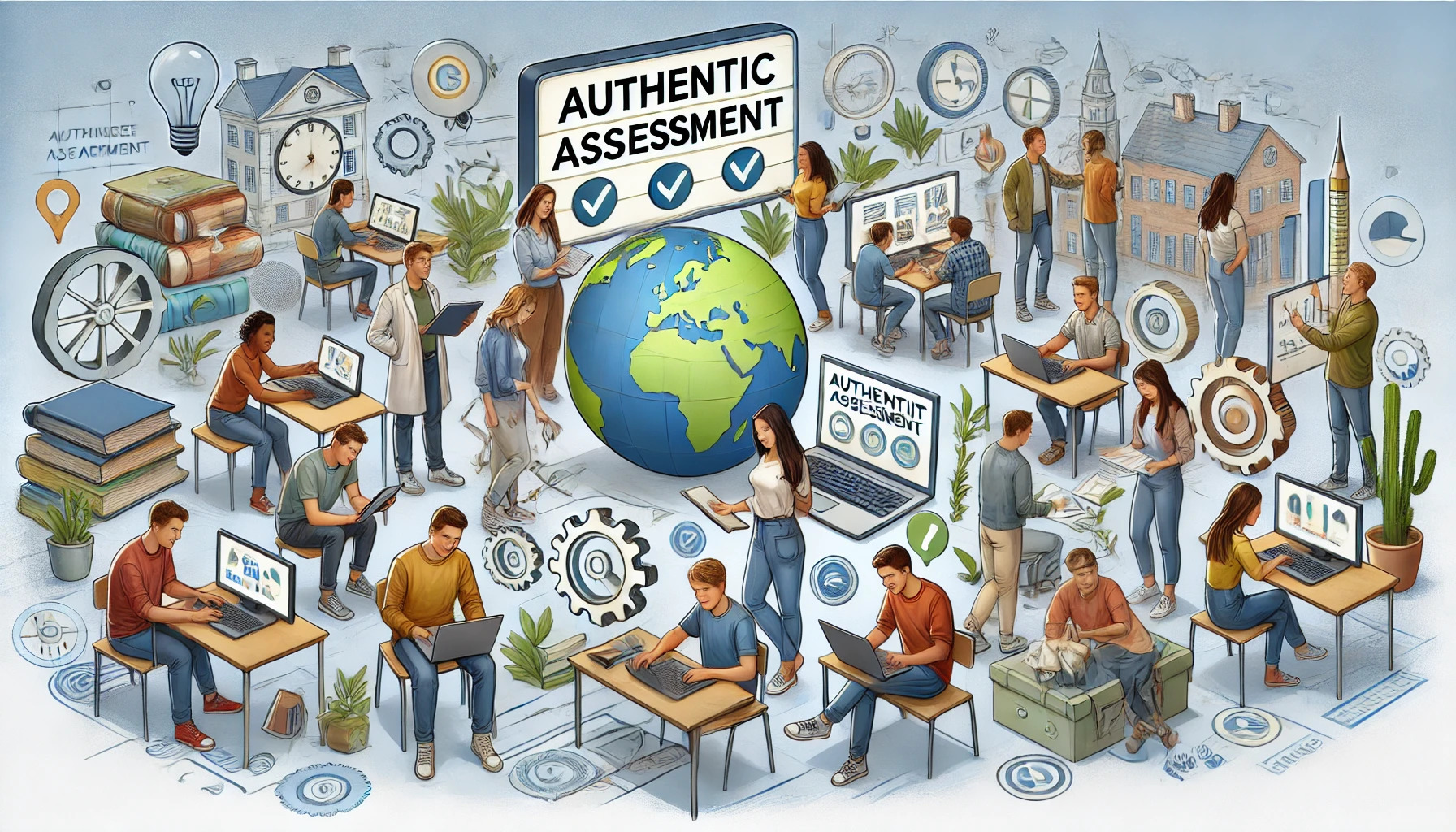What is Authentic Assessment? An Overview

I. Introduction
In the evolving landscape of education, assessment methods are changing too. Educators are moving away from traditional, one-size-fits-all testing approaches and towards methods that truly reflect what students have learned in meaningful ways. One such method is authentic assessment. But what exactly is authentic assessment, and why is it gaining traction, especially in online and distance education? This blog post aims to provide an overview, exploring how authentic assessment works, how it differs from traditional methods, and why it is crucial for today’s learners.
II. Defining Authentic Assessment
Authentic assessment is a form of evaluation that focuses on tasks mirroring real-world challenges. Instead of assessing a student’s ability to recall information in a controlled exam setting, authentic assessments evaluate how students apply their knowledge and skills to practical, often complex, scenarios. The goal is to create opportunities where students can demonstrate their understanding in a context that feels relevant and prepares them for life beyond the classroom.
Authentic assessments are particularly effective because they emphasize competencies and real-life problem-solving. By assessing students through activities they are likely to encounter in their careers or daily life, educators can offer a more engaging and effective learning experience.
III. Traditional vs. Authentic Assessment
Traditional assessments, such as standardized tests, quizzes, and final exams, tend to focus on rote memorization and isolated facts. These forms of assessments often measure a student’s ability to recall specific pieces of information within a set timeframe.
In contrast, authentic assessment shifts the focus to the practical application of knowledge. It involves activities that replicate the complexities of real-life situations—whether it’s conducting a scientific experiment, solving an industry-specific problem, or developing a portfolio of creative work. Authentic assessments go beyond measuring what a student knows at one point in time; they assess how well a student can think critically, collaborate, and creatively solve problems.
IV. Key Features of Authentic Assessment
There are several key characteristics that set authentic assessments apart:
- Real-World Relevance: Authentic assessments are based on tasks that resemble the kinds of problems people solve in real-world settings. This helps bridge the gap between theory and practice.
- Student Agency: These assessments often give students choices about how to approach a task. This flexibility encourages students to engage deeply and personalize their learning experience.
- Emphasis on Process: Rather than only valuing the final answer, authentic assessment focuses on the learning process. It encourages critical thinking, creativity, and reflection—all key components of lifelong learning.
V. Why Authentic Assessment is Important in Online and Distance Education
In the context of online and distance education, authentic assessment plays a vital role in enhancing student engagement and creating meaningful learning experiences. The flexibility and real-world focus of authentic assessments make them ideal for diverse, dispersed learners who benefit from connecting their education to real-life contexts.
- Increased Engagement: Authentic assessments can make learning more engaging by allowing students to see the direct impact of their work. When students understand how the skills they’re developing are relevant to their personal or professional lives, motivation naturally increases.
- Skill Transfer: In a rapidly changing world, the ability to transfer skills from one context to another is crucial. Authentic assessment provides students with opportunities to apply their learning in varied contexts, helping them develop versatile, adaptable skills.
- Personalized Learning Paths: Authentic assessment allows for more personalized learning, giving students the opportunity to demonstrate their knowledge in ways that suit their strengths and interests, which is particularly effective in flexible online learning environments.
VI. Examples of Authentic Assessment in Practice
- Projects and Portfolios: One common example is asking students to compile a portfolio of work that showcases their learning journey over time. Projects that require students to apply concepts to real-world problems also fit well within authentic assessment.
- Simulations and Role-Playing: Using virtual simulations or role-playing activities allows students to immerse themselves in realistic scenarios, helping them apply theoretical concepts in a controlled but practical environment.
- Case Studies and Problem-Based Learning: Providing students with real-life case studies to analyze and solve is another way to facilitate authentic learning. This encourages them to engage deeply with the material and think critically.
VII. Challenges of Implementing Authentic Assessment Online
Implementing authentic assessment in an online context does present challenges. For example, it may require more effort to ensure academic integrity or scalability, particularly in large courses. However, there are effective strategies for addressing these challenges, such as using technology tools to support collaboration, employing peer reviews, and designing clear rubrics that help students understand expectations.
VIII. Conclusion
Authentic assessment offers a richer, more dynamic approach to evaluating student learning. By focusing on the real-world application of knowledge, it equips students with skills that are essential for both their careers and everyday life. Especially in the context of online and distance education, where student engagement can be challenging, authentic assessment provides a meaningful way to make learning relevant, engaging, and impactful.
If you are an educator looking to incorporate authentic assessment into your teaching, consider starting small with projects or case studies that align with your learning objectives. Reflect on your current assessment practices and ask yourself: How can I create opportunities for students to demonstrate their learning in ways that matter beyond the classroom?